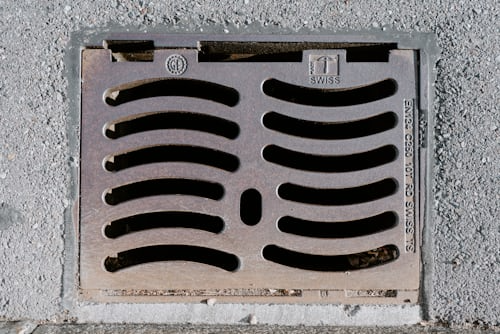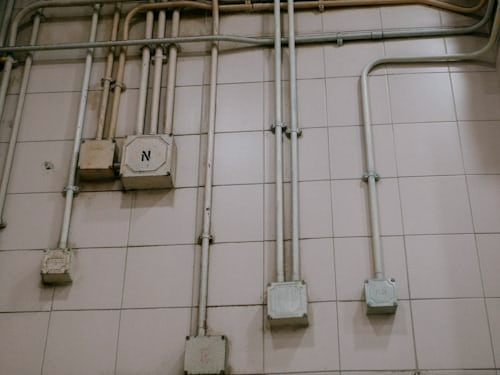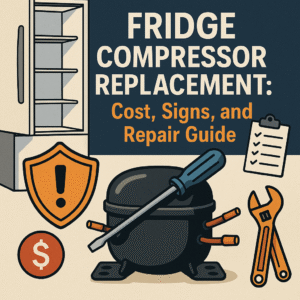Installing a dishwasher drain line might seem daunting, but it’s manageable with the right guidance. Understanding the components and their functions is crucial for a successful installation.
A well-installed drain line ensures efficient drainage and prevents leaks. This guide will walk you through the process, offering tips and best practices.
Whether you’re a homeowner or a DIY enthusiast, this article is tailored for you. We’ll cover everything from the drain hose location to the discharge hose installation.
By the end, you’ll know how to install a dishwasher drain pipe with confidence. Let’s dive into the essentials of dishwasher drain line installation.
What Is a Dishwasher Drain Line?
A dishwasher drain line is a critical component of your kitchen’s plumbing. It connects the dishwasher to the household drainage system. This connection ensures waste water is efficiently transported away from the appliance.
Without a proper drain line, water from the dishwasher has nowhere to go. It could lead to leaks and potential water damage. The drain line is usually flexible, made of rubber or plastic, and designed to handle the hot water used in washing dishes.
Key functions of a dishwasher drain line include:
- Carrying wastewater from the dishwasher to the drain.
- Preventing backflow into the dishwasher.
- Facilitating proper drainage to avoid clogs.
By understanding the role of the drain line, you’ll be better prepared for installation and maintenance tasks.

Key Components of a Dishwasher Drain System
The dishwasher drain system comprises several essential components that work together for optimal performance. Each part plays a role in ensuring efficient water disposal. A basic understanding of these parts is vital for a successful installation.
At the heart of this system is the drain hose, which carries wastewater away. It usually connects to either a garbage disposal or a sink drain. The proper attachment of the hose is crucial to avoid leaks.
Other critical elements include:
- Drain hose: Flexible, often made of plastic or rubber.
- Garbage disposal connection: Where the hose may attach to grind food waste.
- Sink drain connection: Alternative to garbage disposal.
- Air gap/high loop: Prevents wastewater backflow.
Ensuring all these components are well-maintained ensures your dishwasher operates efficiently for years to come.
Troubleshooting Dishwasher Not Draining | Easy Steps
Tools and Materials Needed for Installation
Installing a dishwasher drain line requires specific tools and materials. Having everything ready in advance can streamline the process and prevent interruptions. Ensure you gather all necessary items before starting.
Essential tools and materials include:
- Adjustable wrench
- Hose clamp
- Teflon tape
- Pliers
- Screwdriver
- Drain hose (compatible with your dishwasher model)
These items will help you install the drain line efficiently and securely. Using the proper tools ensures all fittings are tight, reducing the risk of leaks. Careful preparation is key to a successful and hassle-free installation.
Step-by-Step Guide: How to Install a Dishwasher Drain Pipe
Installing a dishwasher drain pipe can seem daunting, but it’s manageable with the right guidance. Follow this step-by-step approach to ensure a smooth installation process.
Preparing the Work Area
Begin by clearing the area around your dishwasher. Ensure the power to the dishwasher is turned off. This step is crucial for safety.
Connecting the Drain Hose
Locate the drain hose at the back of the dishwasher. The drain hose will typically connect to either the garbage disposal or a sink drain.
- Position the Drain Hose:
- Feed the hose through the hole in the cabinet.
- Ensure it reaches the connection point without stretching or straining.
- Attach the Hose to Disposal:
- If connecting to a garbage disposal, use a hose clamp.
- Secure the hose firmly over the disposal inlet.
Securing and Routing the Drain Hose
The hose needs to be routed properly to prevent water flow issues or backflow. A high loop or air gap is commonly used.
- Create a High Loop:
- Secure the hose at a height above the water outlet level.
- Use a bracket or zip-tie to maintain this position.
- Check Hose Clearance:
- Ensure the hose is not pinched or kinked.
- Adjust routing if necessary to avoid blockages.
Finalizing Connections
Tighten all connections. Use a screwdriver to secure hose clamps firmly. It’s essential to ensure no leaks can occur at the connection points.
Testing the Setup
Turn the dishwasher’s power back on. Run a short wash cycle to test the drain connections. Monitor for leaks and check if water drains smoothly.
Troubleshooting Issues
If leaks occur, re-check connections and hose clamps for tightness. Verify the hose is properly routed with no obstructions.
By carefully following these steps, you can confidently install a dishwasher drain pipe, ensuring efficient and trouble-free operation. This guide provides a comprehensive approach to a successful installation.
Common Dishwasher Drain Hose Locations and Fittings
Dishwasher drain hoses are typically located at the rear of the appliance. This is a standard design for easy access during installation. Their strategic placement helps minimize installation complexity.
Fittings play a pivotal role in connecting the drain hose to your plumbing. Proper fittings ensure a secure and leak-free connection.
Typical Fittings Include:
- Hose Clamps: Secure the hose to disposal or sink.
- Adapters: Used for compatibility with different plumbing sizes.
- Gaskets: Provide a watertight seal at connection points.
Choosing the right fittings is crucial for optimal performance and preventing leaks. Always ensure compatibility with existing plumbing when selecting fittings.
How to Unclog Garbage Disposal: Step-by-Step Guide & Tips
Tips for Proper Dishwasher Discharge Hose Routing
Efficient hose routing is crucial for dishwasher performance. Avoid sharp bends and ensure a smooth path for the hose. This helps to maintain a steady water flow and prevents wear.
Keep the hose elevated to prevent backflow into the dishwasher. A high loop method or an air gap can achieve this.
Key Routing Tips:
- Avoid tight bends or kinks.
- Use a high loop or air gap.
- Keep the hose above the water level.
Following these tips helps ensure efficient drainage and prolongs the life of your dishwasher system. Proper routing also minimizes the risk of clogs and backflow.

Troubleshooting and Maintenance Tips
Addressing drainage problems promptly can prevent major issues. If your dishwasher isn’t draining, inspect the discharge hose for kinks and clogs. Routinely checking and cleaning ensures it runs smoothly and efficiently.
Regular maintenance includes inspecting connections and ensuring they are secure. Replace hoses showing signs of wear and tear to avoid leaks.
Troubleshooting Tips:
- Check for clogs in the discharge hose.
- Inspect fittings for tightness.
- Regularly clean the drain hose to remove buildup.
These measures help maintain optimal drainage and prolong the appliance’s lifespan. Consistent care reduces the risk of unexpected repairs.
Frequently Asked Questions
Many people have questions about dishwasher drain lines. Understanding common issues helps prevent complications. Below are answers to frequently asked questions.
Common FAQs:
- Where is the drain hose on a dishwasher? It is usually located at the back.
- How often should I check my dishwasher drain hose? Inspect it every six months for clogs or wear.
- Can I install a drain line without professional help? Yes, if you follow the instructions carefully.
Conclusion
Understanding how to install a dishwasher drain line is essential for any homeowner. With the right tools and guidance, you can ensure proper installation and avoid future issues.
Regular maintenance and inspections can keep your dishwasher running smoothly. Follow these tips and enjoy the convenience of a well-functioning appliance. Take control of your home plumbing and save on costly repairs.





